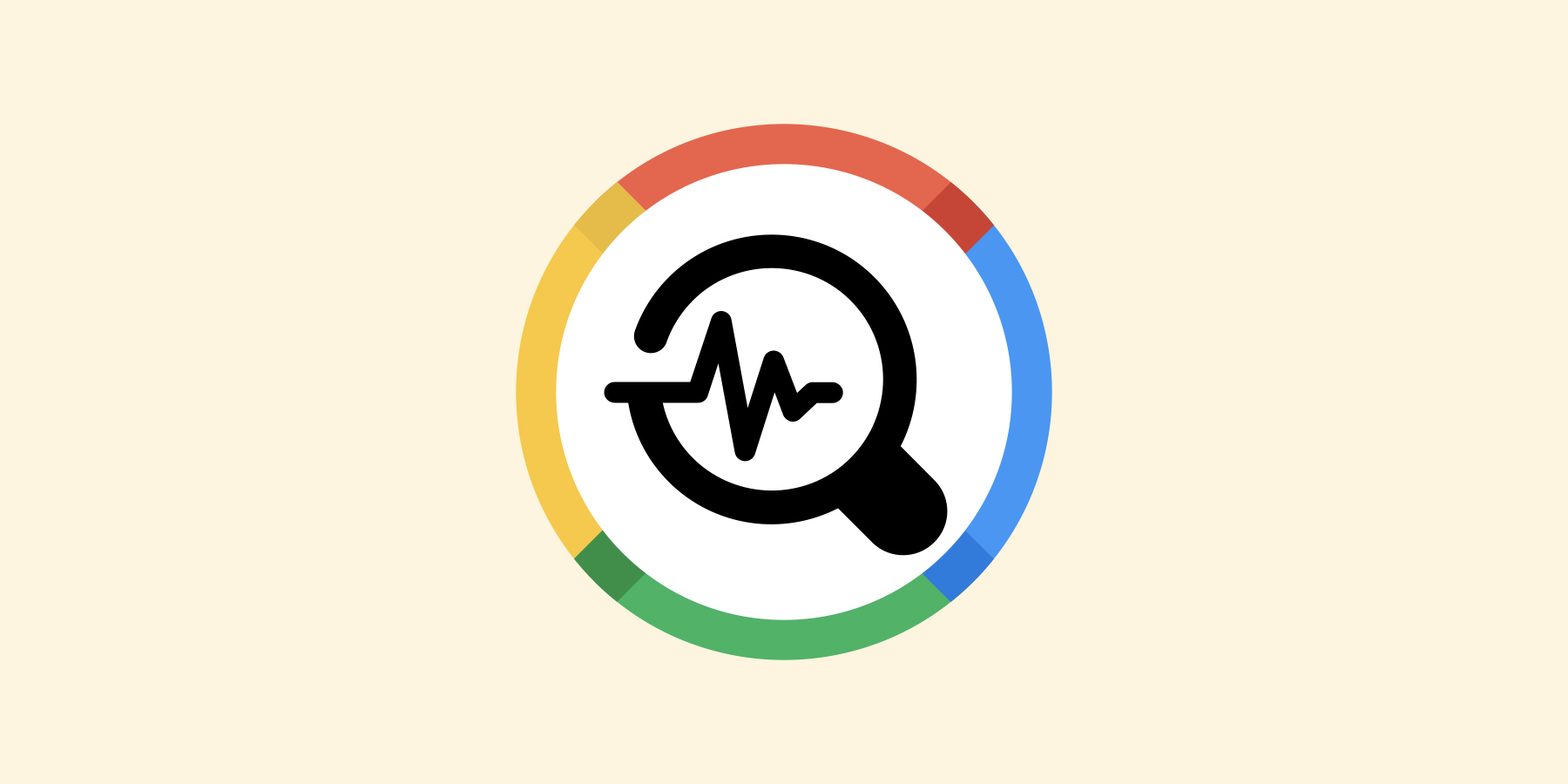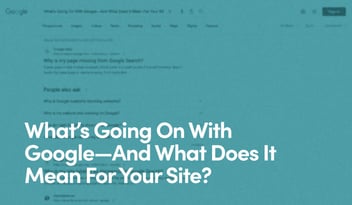Google Algorithm Updates: What Do They Mean for Your Website?

It’s been a busy year for Google algorithm updates—something that, as content marketers, we pay close attention to, and with good reason: Google’s search engine market share is approximately 85% on desktops, and more than 93% on mobile, meaning that any change to the way it ranks sites can have make-or-break consequences for your company’s ability to attract new customers. Every time the algorithm is updated, there is both risk and reward: the risk that a given site loses some of its rankings if the changes penalize an aspect of the content or site architecture, and the potential reward of being ranked better and attracting more—and more relevant—visitors if the changes work in our favor.
In this post, I’ll sum up some of the more significant changes we’ve seen of late, how they’ve impacted our clients, and how we perceive the content landscape as we head into 2023.
I’ll dive into specifics in a second, but if you’d prefer a couple of key takeaways up front, here you go:
- Google’s recent algorithm updates are a continuation of a longer-term shift toward promoting and highlighting content that informs users rather than simply tries to sell to them, and reducing the amount of junk content in its rankings. All of this is a result of a desire to provide a seamless experience for users.
- This coincides with the Hypha HubSpot Development team’s view of a website's purpose—you should be looking to attract visitors by providing useful information! As such, the majority of our clients’ sites have at worst been unaffected by the latest tweaks and, at best, have gained ground in both rankings and traffic since the latest rollout.
What changes has Google made to its algorithm in 2022?
So far this year, the company has rolled out eight updates. These include:
- One Page Experience Update in February
- Three Product Review Updates in March, July & September
- Two Core Updates in May & September
- One Helpful Content Update in August
- One Spam Update in October
From our perspective, the highest priority updates are those affecting how Google reads and categorizes the information on blogs and standard site pages to deliver the best results for its users. As such, while we stay on top of all of the updates, we have paid extremely close attention to the page experience, helpful content, and spam updates throughout this year, to ensure that our clients’ sites are not negatively impacted.
Page Experience Updates
The page experience update in early 2022 was more important across our client base, because it introduced an entirely new group of variables—Core Web Vitals metrics—into its calculations for ranking the desktop version of sites. With so many of our clients operating in the B2B space—where the majority of searches still take place on desktop computers rather than smartphones—this was an update we had to be sure to be ahead of. As such, our developers spent a significant amount of time in the early part of this year ensuring that all of our client sites were well within the parameters that Google defines for offering a good page experience.
Core Updates
Google’s algorithm is an ever-changing formula so complex that no single person can adequately explain everything it does. One reason for this complexity is that the company rolls out “core” updates a couple of times a year—tweaks aimed at fine-tuning the algorithm’s performance. In addition to keeping search results up to date, these updates also help the company stay one step ahead of SEO “experts” exploiting loopholes to gain higher ranking positions (as opposed to genuinely providing the best answer to a question and best user experience).
While core updates consistently cause upheaval with keyword rankings, these effects typically only last a few weeks—sites with the strongest content tending to be rewarded when the recalibrations are complete. As such, these updates tend to be less significant for our team and clients than some of the others on this list.
Helpful Content Updates
The more time you spend reading advice on SEO, the easier it is to forget that Google exists to help point people in the right direction for whatever they’re looking for—whether advice, products, or an almost-forgotten musician’s only televised live performance from 1962.
As such, the company regularly rolls out updates aimed, in its words, at helping people “see original, helpful content written by people, for people, in search results.” These updates leverage machine learning to reward higher-quality content providers with better rankings, while filtering out content that has been explicitly produced for non-human audiences (better known as Google).
We at Hypha HubSpot Development welcome these updates, because they mesh so closely with the work we do on behalf of our clients. They take into account not just the piece of content someone clicked on delivered by search engine results pages (SERPs), but how well the user has interacted with that content. Did they spend time on the page? Visit other pages on the site? Click the back button and try the next result?
As with core updates, there is sometimes a period of fluctuation in an individual site’s rankings when helpful content updates are rolled out, but sites that are built to serve real people—and populated with relevant, useful content—tend to win out over the long haul.
Spam Updates
Put simply, spam updates exist to make the web a better, safer place for users. Search spam techniques include keyword stuffing, so-called “cloaking” content by showing different versions of a site to Google and users, and link building among networks of bot-generated, low-quality sites to try to create the appearance of a legitimate, reputable site.
While Team Hypha pays close attention to these updates to ensure we’re always up to date on threats, these tend to have little impact on our clients due to the fact they are all legitimate businesses, for whom we are producing legitimate content.
Product Review Updates
While the three product review updates are significant—with each tweak aimed at helping to deliver the most useful reviews of products that consumers search for—the reviews are an area that typically lies beyond the control of the company. With that said, it’s always good to see Google attempting to promote genuine reviews and the companies they’re about—and discount those that seem either fake and overly positive, or overly negative.
How have Hypha clients been impacted by Google updates in 2022?
When it comes to measuring the impact of any given update, there are really three variables in play for any site: Number of Keywords Overall, Keywords in the Top 3 Positions, and Organic Traffic.
These metrics are significant because they form something of a funnel.
Number of Keywords Overall
To rank for anything, your site must establish credibility with Google by demonstrating expertise in your field. This typically starts by producing enough content to send a clear signal to the algorithm to begin indexing and testing a variety of keywords (KWs) in lower-ranked positions. Therefore, a rise in the number of overall keywords is a signal that Google is testing your site and trying to figure out which users to show your content to.
Keywords in the Top 3 Positions
Once the algorithm is satisfied that your site has the requisite experience and expertise to provide a good user experience, it may start ranking specific pages in the Top 3 search results for specific keywords. This is a big deal for most sites, because these positions attract approximately 75% of all clicks on a given search. Therefore, a rise in Top 3-ranked keywords is a strong signal that your content is resonating with the audience Google is showing it to—and so the algorithm is likely giving you a chance on related keywords, as well.
Organic Traffic
The final metric to consider is traffic. In most cases, more keywords will lead to a rise in organic traffic. However, it is worth keeping Google’s core mission in mind: The company is trying to connect its users with the best content for the user at the point along the buyer’s journey they are conducting their search. As such, it is possible that some sites will experience a drop in organic traffic even as their keyword totals increase. This tends to happen as Google gains a greater sense of your company’s capabilities—you’ll see less traffic from broad-based searches (“what is cybersecurity?”) and more from relevant searches that are likely to turn into actual leads on your site (“best cybersecurity solutions for small businesses in Alaska”).
So, with that out of the way, here’s how our clients have fared throughout the raft of Google updates this year:
The above chart represents the total keywords and total organic visits of every Hypha HubSpot Development client that has been with us since the start of the year. As you can see, we’ve managed to significantly improve our KW volume, growing from just over 78,000 combined KWs in January, to around 105,000 as of September. That’s a clear signal that the content we’ve produced to date has been recognized and rewarded, even as Google’s algorithm has been tweaked and updated throughout the year.
Despite that growth, our clients’ combined organic traffic is around the same level as it was at the beginning of the year, having taken a substantial dip following the core update in May—and having been rewarded in the aftermath of the helpful content update. Given the recent growth we’ve seen in KWs, we have good reason to believe that this upward traffic trend will continue in the months ahead.
Traffic remaining constant while KW volume increases is also a sign that the traffic we’re seeing is likely from more relevant users. As Google improves its understanding of a site’s offerings (something that happens as the content gets ever more in-depth), it’s common to see shorter, simpler KWs fall off, and to rank for more focused, buyer-centric KWs. Think about the difference in search volume for “glass”—a term with hundreds of thousands of monthly searches, versus “exterior architectural glass for construction” or “hand-blown decorative wine glass.” The first term is something you might begin to rank for when you first launch a glass company site and begin producing content—attracting lots of visitors, most of whom will not be customers. But as you build out your expert content, Google learns what kind of glass you specialize in, and can begin to send you more appropriate visitors.
That trend is also reflected in the Top 10 KW positions (see graph below). We saw a slight drop in KWs in the Top 3 positions following the May update, with some fluctuation ever since. The steep drop that can be seen in August is likely a result of the recalibration and testing following the helpful content update, as older content is reevaluated by the algorithm. Since then, we have seen a steady recovery, as that content—plus some new pieces—has been rewarded.
What’s Next? — Looking Ahead to 2023
While it’s impossible to predict where Google will take its algorithm next, the changes throughout 2022 indicate that content quality will continue to be a significant factor in its calculations.
Along with that, it’s clear that factors such as recency, time on page, and user experience on both mobile and desktop will also continue to demand close attention. With all of those factors in mind, here are a few strategies that we’ll be pursuing throughout the coming year (in addition to continuing to produce fresh, expert content, of course!).
- Updating Existing Content - When considering user experience and helpfulness, the age of a piece of content is obviously a factor for Google. While a post that dominated the rankings in 2016 might still be relevant today, it’s likely going to get penalized if it hasn’t been touched since its original publication date. As such, overhauling, updating and refreshing specific pieces of existing content is a great way to maintain and improve rankings.
- Creating Internal Links - We’re all in on HubSpot’s pillar and cluster model. Tying relevant pieces of content together with links helps Google to define what you know about, and serve the right piece of content to the right person at the right time. In addition to carefully designing our new content plans, we’ll also be looking for opportunities to link to existing pages and posts when crafting new articles. A new link to an older post is another way of sending a signal to Google that the piece is still relevant and deserves consideration.
- Leveraging Existing Content - Sometimes you don’t need to do anything to help a piece of content maintain its ranking other than remind users that it exists. So in addition to referencing pieces with links and updating older ones, we’ll also be seeking to incorporate valuable content into email, social media and even sales campaigns. Simply sending regular traffic to a piece can provide a strong signal about its relevance for search engines.
- Helping Users Find What They Need - With the importance of on-page experience rising all the time, it’s critical to consider a user’s path through the site with every piece we produce. From judicious linking to well-placed CTAs, we’ll be thinking a lot about how best to capture—and keep—every visitor’s attention once they’ve arrived on the site.
- Considering Accessibility - Helpful content should serve any audience that arrives on the site. By making our pages fully accessible and providing useful image and audio descriptions, we will also improve Google’s ability to read—and therefore rank—the pages.
- Having Integrity & Transparency - By now, it should be obvious that the key to navigating frequent algorithm changes and updates isn’t to go chasing the latest SEO tip, trick, or hack. It’s to pick a lane and produce quality content that aims to please the audience first. By doing things the right way, we expect to continue to win in the long run.
The Hypha HubSpot Development Difference
As mentioned earlier, our approach to producing content meshes closely with the trends in Google’s recent algorithm changes. We’re in the business of producing quality content that provides value for users—which is exactly the kind of content that Google is intent on surfacing in its goal to deliver the best possible user experience for its customers. By continuing to focus on our clients’ customers’ needs, we’re confident that Google will continue to reward the content we produce—with no tricks, workarounds or “search engine secrets” necessary!


